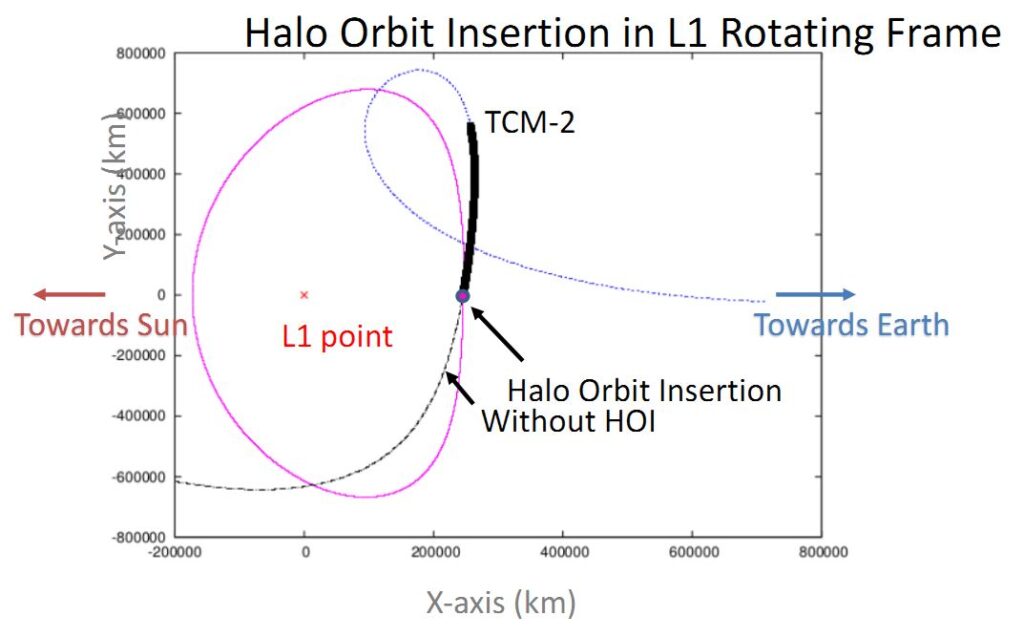
In a remarkable feat of precision and expertise, the Indian Space Research Organisation (ISRO) has successfully achieved the Halo-Orbit Insertion (HOI) of its solar observatory spacecraft, Aditya-L1. This significant maneuver occurred around 16:00 hrs. (IST) on January 6, 2024, as the final phase involved a brief firing of control engines.
Aditya-L1 now follows a periodic Halo orbit situated approximately 1.5 million km from Earth along the Sun-Earth line, completing one orbit every 177.86 Earth days. This unique orbit minimizes fuel consumption and guarantees an uninterrupted, five-year observation of the Sun. Placing Aditya-L1 in this Halo orbit offers distinct advantages over a Low Earth Orbit (LEO), including a smooth Sun-spacecraft velocity change suitable for helioseismology, positioning outside Earth’s magnetosphere for solar wind and particle sampling, and continuous communication with ground stations.
The complex process of Halo orbit insertion began as Aditya-L1 crossed the XZ plane in the Sun-Earth-L1 rotating system. The insertion maneuver was crucial to align the spacecraft with the required Y-velocity in the L1 rotating frame for the designated Halo orbit. The success of this precise insertion, involving constant monitoring and adjustment of the spacecraft’s speed and position, highlights ISRO’s capabilities in handling intricate orbital maneuvers, instilling confidence for future interplanetary missions.
Aditya-L1, designed at UR Rao Satellite Centre, involved collaboration from various ISRO centers. The spacecraft’s payloads were developed by Indian scientific laboratories, including IIA, IUCAA, and ISRO. Launched on September 2, 2023, Aditya-L1 underwent a series of liquid engine burns and meticulous maneuvers, including trans-L1 injection (TL1I) and course corrections (TCM-1 and TCM-2), to reach the desired Halo orbit. The successful HOI on January 6, 2024, marked a crucial milestone, ensuring the spacecraft’s readiness for its mission to observe and understand the chromospheric and coronal dynamics of the Sun in a continuous manner. The graphic representation below illustrates the spacecraft’s journey towards the L1 point and the critical role played by the firing maneuvers in achieving the precise Halo orbit insertion condition. Without this meticulous HOI maneuver, the spacecraft would have continued in a different trajectory, underscoring the significance of this achievement by ISRO.


This information and all the ata given by you was really very helpful. The students who are preparing for some govt exams can also go with this.
It would be great if you keep on posting related to this also.